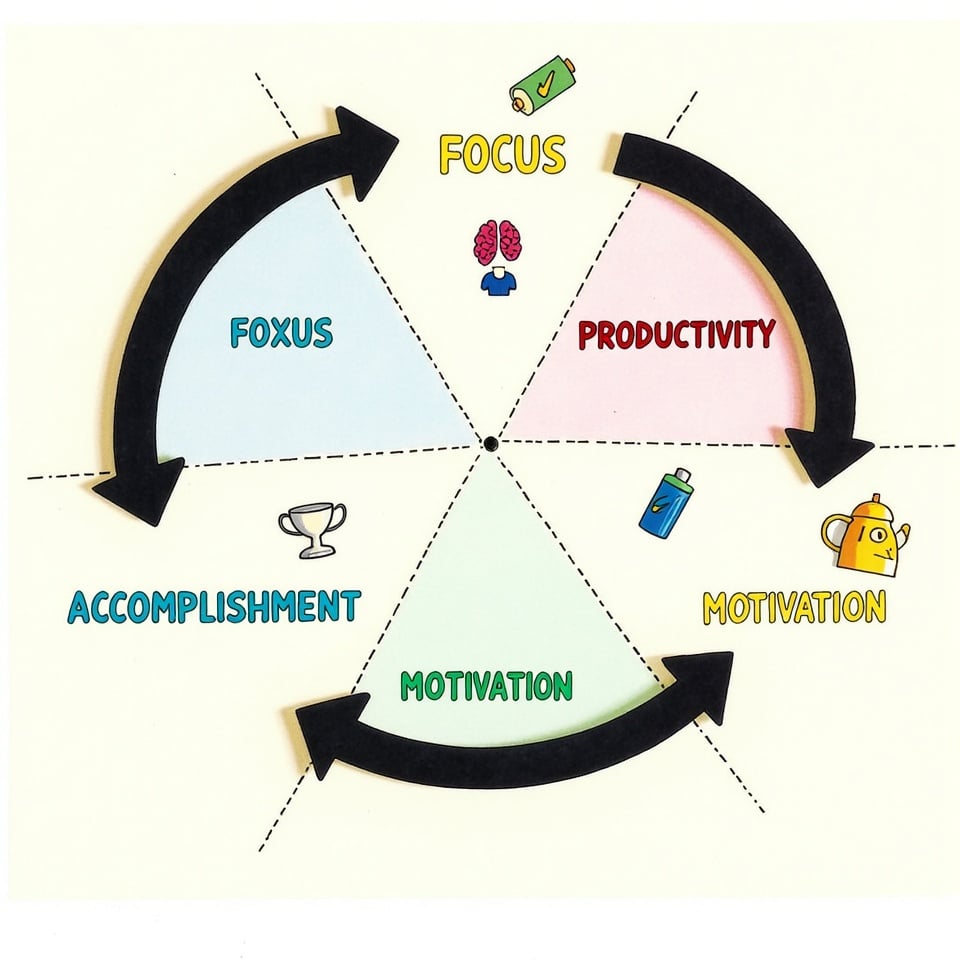Parallelism in grammar refers to the use of similar structures or patterns in two or more clauses or phrases that are connected by a conjunction. This technique helps to create balanced and harmonious sentences that are easy to read and understand. By using parallel structures, you can convey your message with precision and style, making your writing more engaging and effective.
Table of Contents
What is parallelism in grammar
Parallelism in grammar is the use of similar structures or patterns in two or more clauses or phrases that are connected by a conjunction, such as “and” or “or”, to create a balanced and harmonious sentence.
Parallelism importance cannot be overstated, as it makes your writing clearer, more concise, and easier to read. By using parallel structures, you can convey complex ideas in a more organized and logical way, which is essential for effective communication. Parallelism also helps to create a sense of rhythm and flow in your writing, making it more engaging and enjoyable to read.
How to create parallelism in grammar
Creating parallelism in grammar is a skill that can be mastered with practice and attention to detail. By following some simple techniques and avoiding common mistakes, you can create balanced and harmonious sentences that convey your message with precision and style.
Techniques for creating parallelism
To create parallelism, use similar structures or patterns in two or more clauses or phrases that are connected by a conjunction.
Here are some techniques to help you get started:
- Use identical verb forms: Use the same verb form in each clause or phrase to create a sense of balance and harmony.
- Use similar sentence structures: Use similar sentence structures, such as compound or complex sentences, to create a sense of parallelism.
- Use parallel phrases: Use parallel phrases, such as prepositional phrases or infinitive phrases, to create a sense of balance and harmony.
Common mistakes to avoid in parallelism
While creating parallelism is important, it’s equally important to avoid common mistakes that can disrupt the balance and harmony of your sentences.
Here are some mistakes to watch out for:
Ensuring consistency in verb Forms
One of the most common mistakes in parallelism is using inconsistent verb forms.
For example:
Incorrect: “I love reading books, writing stories, and to learn new things.”
Correct: “I love reading books, writing stories, and learning new things.”
Avoiding mismatched parts of speech
Another common mistake is using mismatched parts of speech.
For example:
Incorrect: “The new policy will increase productivity, reduce costs, and a better work-life balance.”
Correct: “The new policy will increase productivity, reduce costs, and improve work-life balance.”
Maintaining consistency in noun number
It’s also important to maintain consistency in noun number when creating parallelism.
For example:
Incorrect: “The company will hire new employees, including a manager, writers, and a designer.”
Correct: “The company will hire new employees, including managers, writers, and designers.”
More examples of mismatched parts of speech
Here are a few more examples of mismatched parts of speech to watch out for:
Incorrect: “The new restaurant serves delicious food, has a great atmosphere, and is a lot of fun.”
Correct: “The new restaurant serves delicious food, has a great atmosphere, and offers a lot of fun.”
Incorrect: “The city is known for its beautiful parks, rich history, and to be a great place to live.”
Correct: “The city is known for its beautiful parks, rich history, and being a great place to live.”
What is parallelism in rhetoric and literature
Parallelism is not only a grammatical concept, but also a powerful tool in rhetoric and literature. In these fields, parallelism is used to create a specific effect, convey meaning, and engage the audience.
Understanding parallelism in rhetoric
In rhetoric, parallelism is used to create a sense of balance, harmony, and rhythm in speech and writing. It involves the repetition of similar structures, words, or phrases to emphasize a point, create a sense of unity, and persuade the audience.
Parallelism can be used to:
- Create a sense of urgency or excitement
- Emphasize a key message or idea
- Build anticipation or suspense
- Create a sense of rhythm or musicality
The power of parallelism in literature
In literature, parallelism is used to create a rich, layered, and complex text that rewards close reading and analysis.
It can be used to:
- Create a sense of symmetry or balance
- Highlight contrasts or contradictions
- Emphasize themes or motifs
- Create a sense of continuity or cohesion
Examples of parallelism in famous literary works
Many famous literary works use parallelism to great effect. Here are a few examples:
- In Martin Luther King Jr.’s “I Have a Dream” speech, parallelism is used to create a sense of rhythm and emphasis: “I have a dream that one day this nation will rise up and live out the true meaning of its creed… I have a dream that my four little children will one day live in a nation where they will not be judged by the color of their skin…”
- In William Shakespeare’s Sonnet 18, parallelism is used to create a sense of balance and harmony: “Shall I compare thee to a summer’s day? / Thou art more lovely and more temperate…”
- In Maya Angelou’s “Still I Rise,” parallelism is used to create a sense of rhythm and defiance: “You may write me down in history / With your bitter, twisted lies, / You may trod me in the very dirt / But still, like dust, I’ll rise.”
Exploring different types of parallelism
Parallelism is a powerful literary device that can add depth, complexity, and rhythm to your writing.
While synthetic, synonymous, and model parallelism are three common types, there are many other forms of parallelism that can be used to create a range of effects.
Let’s explore some of these different types of parallelism:
Synthetic parallelism
Synthetic parallelism is a type of parallelism where two or more clauses or phrases are connected to form a new idea or concept.
This type of parallelism involves the use of conjunctions or other connecting words to link the clauses or phrases together. Synthetic parallelism is often used to:
- Create a sense of continuity or flow
- Show the relationship between two or more ideas
- Emphasize the connection between two or more concepts
For example: “I came, I saw, I conquered.” This phrase uses synthetic parallelism to connect three clauses together to form a new idea.
Synonymous parallelism
Synonymous parallelism is a type of parallelism where two or more words or phrases are used to convey the same idea or meaning.
This type of parallelism involves the use of synonyms or words with similar meanings to create a sense of repetition or emphasis. Synonymous parallelism is often used to:
- Emphasize a key idea or concept
- Create a sense of rhythm or musicality
- Add depth or complexity to a text
For example: “We shall fight on the beaches, we shall fight on the landing grounds, we shall fight in the fields and in the streets.” This phrase uses synonymous parallelism to repeat the idea of fighting in different locations.
Model parallelism
Model parallelism is a type of parallelism where a pattern or structure is repeated in two or more clauses or phrases. This type of parallelism involves the use of a model or template to create a sense of consistency or uniformity. Model parallelism is often used to:
- Create a sense of order or organization
- Emphasize the connection between two or more ideas
- Add clarity or precision to a text
For example: “The first shall be last, and the last shall be first.” This phrase uses model parallelism to repeat a pattern of reversal.
Anaphora
Anaphora is a type of parallelism where a word or phrase is repeated at the beginning of successive clauses or sentences. This type of parallelism is often used to create a sense of emphasis or rhythm.
For example: “We shall fight on the beaches, we shall fight on the landing grounds, we shall fight in the fields and in the streets.”
Antithetical Parallelism
Antithetical parallelism is a type of parallelism where two or more clauses or phrases are used to contrast ideas or words. This type of parallelism is often used to create a sense of tension or balance.
For example: “It was the best of times, it was the worst of times.”
Epistrophe
Epistrophe is a type of parallelism where a word or phrase is repeated at the end of successive clauses or sentences. This type of parallelism is often used to create a sense of rhythm or musicality.
For example: “What lies within us, what lies before us, are tiny matters compared to what lies beyond us.”
Parallel Clauses
Parallel clauses are a type of parallelism where two or more clauses or phrases have a similar structure and are used to create a sense of repetition or emphasis.
For example: “I came, I saw, I conquered.”
Rhetorical Parallelism
Rhetorical parallelism is a broader term that refers to the use of parallel structures in language to create a rhetorical effect, such as emphasis, contrast, or rhythm. This type of parallelism can be used to add depth, complexity, and persuasive power to your writing.
Antithesis
Antithesis is a type of parallelism where two or more contrasting ideas or words are used in a single sentence or phrase. This type of parallelism is often used to create a sense of balance or tension.
For example: “It is not the years in your life that count, it is the life in your years.”
Asyndeton
Asyndeton is a type of parallelism where a series of words or phrases are listed without conjunctions. This type of parallelism is often used to create a sense of rhythm or emphasis.
For example: “I came, I saw, I conquered, I triumphed.”
Coordinating Conjunctions
Coordinating conjunctions are words that connect two or more clauses or phrases of equal importance. This type of parallelism is often used to create a sense of continuity or flow.
For example: “I went to the store, and I bought some milk.”
Correlative Conjunctions
Correlative conjunctions are words that connect two or more clauses or phrases of equal importance. This type of parallelism is often used to create a sense of balance or symmetry.
For example: “Both my brother and my sister are coming to the party.”
Why do writers use parallelism in their writing
Writers use parallelism in their writing for a variety of reasons. By employing parallelism, writers can create a range of effects that enhance the clarity, emphasis, and engagement of their writing.
In this section, we’ll explore three key reasons why writers use parallelism.
Enhancing clarity and concision through parallelism
One of the primary reasons writers use parallelism is to enhance clarity and concision in their writing.
By using parallel structures and repeating certain words or phrases, writers can:
- Create a sense of order and organization
- Make complex ideas easier to understand
- Reduce ambiguity and confusion
- Convey information in a concise and efficient manner
For example: “The company’s mission is to provide excellent customer service, deliver high-quality products, and foster a positive work environment.” This sentence uses parallelism to clearly and concisely convey the company’s mission.
Creating emphasis and rhythm with parallelism
Parallelism is also used to create emphasis and rhythm in writing. By repeating certain words or phrases, writers can:
- Draw attention to key ideas or concepts
- Create a sense of urgency or importance
- Build anticipation or suspense
- Create a sense of musicality or rhythm
For example: “We shall fight for freedom, fight for justice, and fight for equality.” This sentence uses parallelism to create emphasis and rhythm, drawing attention to the importance of fighting for these values.
Engaging readers and listeners with parallelism
Finally, writers use parallelism to engage their readers and listeners. By using parallel structures and repeating certain words or phrases, writers can:
- Create a sense of familiarity and connection
- Encourage readers to remember key ideas or concepts
- Build rapport and establish a relationship with the reader
- Create a sense of drama or tension
For example: “Ask not what your country can do for you, ask what you can do for your country.” This famous phrase uses parallelism to engage the listener, creating a sense of familiarity and connection while also emphasizing the importance of individual responsibility.
Parallelism in research paper writing
When it comes to research paper writing, parallelism is a crucial element to consider. A well-crafted research paper requires clear and concise language, and parallelism can help achieve this.
By using parallel structures, research paper writers can:
- Present complex research findings in a clear and organized manner
- Emphasize key results and implications
- Create a sense of flow and continuity throughout the paper
- Enhance the overall readability and credibility of the research
Blainy—AI research paper writer—is designed to help researchers produce high-quality papers that showcase parallelism and clarity.
Wrapping it up
Parallelism is a versatile literary device that can elevate your writing and communication. By applying parallelism in grammar, you can create clear, concise, and engaging content that resonates with your audience. With practice and attention to detail, you can harness the power of parallelism to convey complex ideas, create emphasis, and add rhythm to your writing.
FAQs about parallelism
What is an example of parallelism?
An example of parallelism is: “I came, I saw, I conquered.” This phrase uses parallelism to connect three clauses together to form a new idea.
What is parallelism in english?
Parallelism in English refers to the use of similar structures, words, or phrases to create a sense of balance, harmony, and rhythm in speech and writing. It involves the repetition of similar elements to emphasize a point, create a sense of unity, and engage the audience.
What is parallelism in literature?
In literature, parallelism is a literary device used to create a rich, layered, and complex text that rewards close reading and analysis. It involves the repetition of similar structures, words, or phrases to create a sense of symmetry, highlight contrasts, emphasize themes, and create a sense of continuity.
What is the main idea of parallelism?
The main idea of parallelism is to create a sense of balance, harmony, and rhythm in speech and writing by using similar structures, words, or phrases to emphasize a point, create a sense of unity, and engage the audience. By using parallelism, writers can convey complex ideas in a clear and concise manner, create emphasis and rhythm, and engage their readers and listeners.







